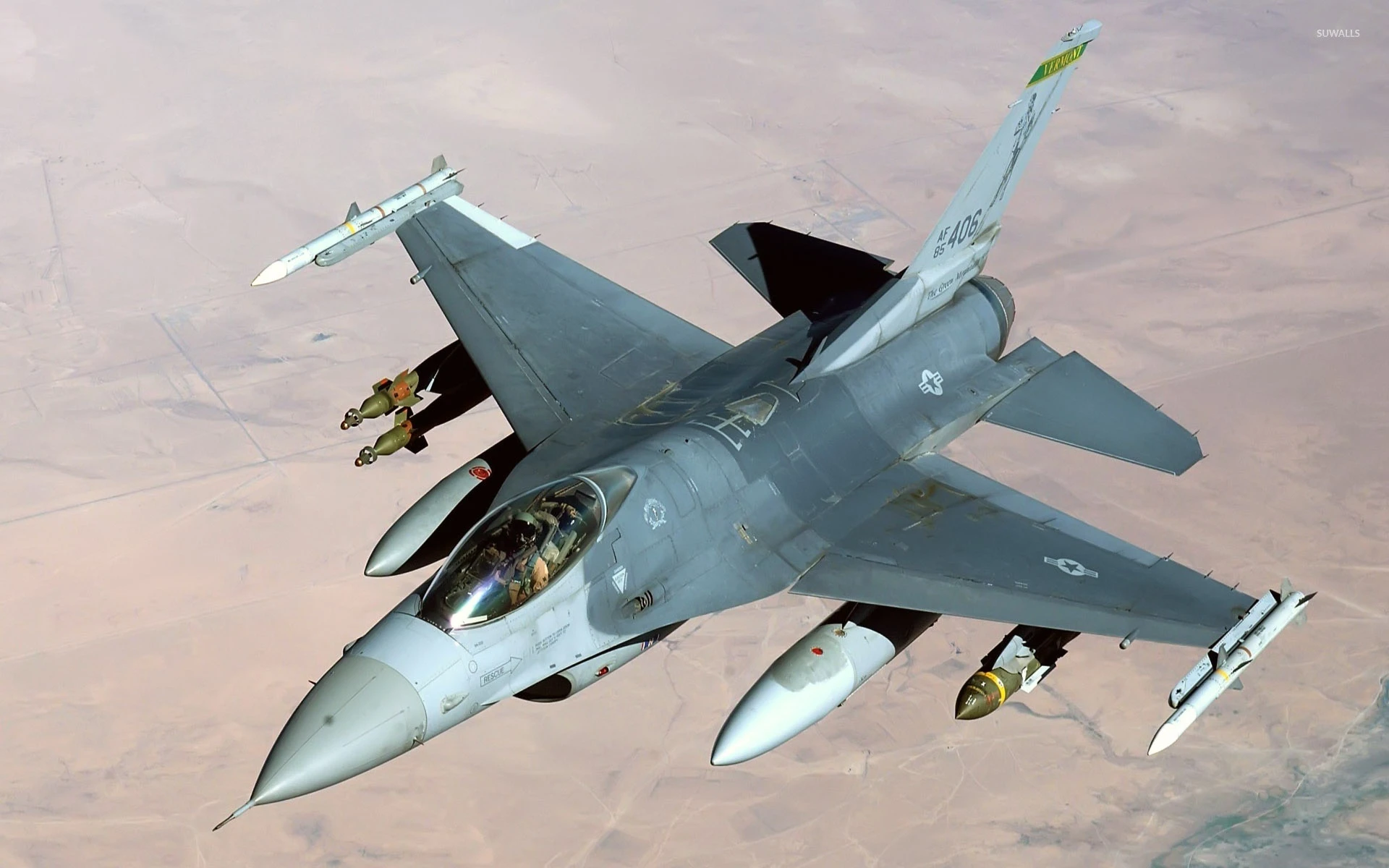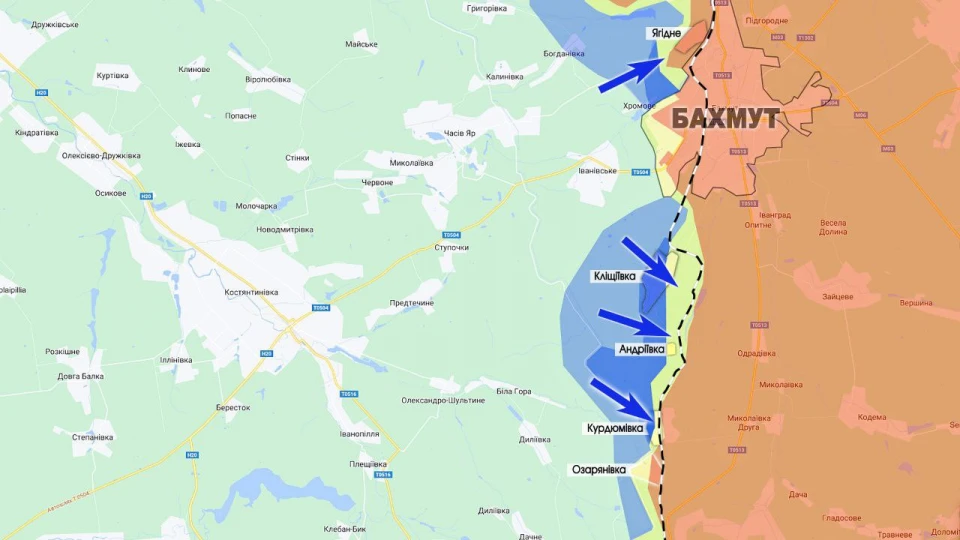
Russia significantly concentrates its troops around Bakhmut - military expert Serhiy Zgurets
To compensate for their losses, invading Russian forces regularly deploy trained units to the Bakhmut area
Ukraine is waiting for F-16s
Ukraine is getting closer to receiving foreign aircraft. The Ukrainian military is already in the UK and Sweden to learn how to operate American F-16 fighters. This became immediately known during a visit to the Netherlands by Ukrainian President Volodymyr Zelenskyy, who announced that Ukraine would receive 42 F-16 fighter jets from this country after Ukrainian engineers and pilots complete their training. This was followed by Denmark's announcement that it was ready to transfer 19 F-16s to Ukraine, 6 by the end of this year and the rest in the next two years.

As for the training period for F-16 pilots, it was determined to be 6 months. This is the minimum required period for pilots, and especially for training ground personnel, especially engineers and technicians who will service these aircraft. One of our pilots said that the program in the UK is complex, and the wishes of the Ukrainian side were taken into account. First and foremost, we are talking about missions that are as close as possible to those performed by our pilots using MiG-29 and Su-27, which are more than 30 years old.
It also became known how many aircraft are needed to replace the outdated Soviet fleet. Today, on August 21, the Air Force said that a total of 128 fighters are needed. This figure is in line with the overall figures and needs, but it will be difficult to replace the entire fleet so quickly by switching to foreign fighters.
Valeriy Romanenko, aviation expert and leading researcher at the National Aviation University, noted that the terms of pilot training have long been discussed. All officials have already agreed on these terms - six months. That is, we will start at the end of August and finish at the end of winter next year. But it won't be a squadron, it will be three units, because it takes even longer for a unit like a squadron to take off. We will get pilots who will confidently fly in pairs, in formation and skillfully use all available weapons of these aircraft. As for the terms of combat use, it will not be exclusively air defense. Ukraine will be able to use the aircraft to suppress Russian air defense with HARM missiles and anti-radar missiles. These functions in calmer areas can also be used from these aircraft. Of course, from the very beginning, no one will use them for air battles with Russian fighters. We need to test their capabilities in a more or less calm environment.
The expert is confident that Ukraine will not receive anything high-precision that can hit ground targets. But there are hopes that Ukraine will receive the latest medium-range missiles that can hit targets at least 120 kilometers away. Not to mention the latest versions that can hit enemy targets at a distance of 180 kilometers, air-to-air missiles. If we use them to shoot down Russian aircraft 100 kilometers deep in Russian territory, no one will say anything to us. But if an airplane flies into Russian territory, then we will have problems with violating agreements.
Romanenko added that the cost of servicing new machines is not as high as we would need when using machines that have already served for a long time. For example, the two machines that were shown to our president at the air base in the Netherlands, one of them was made in 1990 and the other in 1983. We will have to order spare parts for them. 128 aircraft is, of course, a dream not for the next year, but somewhere up to 2025 inclusive. Ukraine will gradually get used to such defense spending. If you don't spend money on your own army, there will be no defense. The costs are enormous, but if we want to survive and win, we have to give up something and give it to the Armed Forces. And now the question is exactly that.
Romanenko noted that Ukraine needs not only fighters, but also cruise missile carriers. We don't have many Su-24s left, and everyone knows that these are old machines. Of course, Gripen fighters will not play a major role in the Ukrainian Air Force, because Sweden will not be able to provide us with that many aircraft. Therefore, this option can be kept as a backup. For example, the Czech Republic will be decommissioning its Gripen, they have 14 fighters of this type. They plan to rearm in 2025 with 5th generation F-35 fighters. Sweden will need to think about where to put these 14 aircraft, and they may offer them to us. But our main bet is on the only combat aircraft we have chosen, the F-16. The Americans are not giving us F-16s now, and this is a question for diplomats. Apparently, the Americans want to see how we will use the F-16. But a pair of F-15s and F-16s would solve almost all the problems of fighting modern Russian fighters. Because F-16s alone, in any quantity, cannot cope with them.
Situation around Bakhmut
And then we will move on to another topic. Let's talk about Bakhmut, which remains the center of gravity of our and the enemy's efforts. On August 21, Deputy Defense Minister Hanna Maliar said that last week the Ukrainian Defense Forces liberated a 3-square-kilometer area near Bakhmut. At the same time, it should be noted that the enemy is significantly consolidating its troops in the north and south of Bakhmut.

In particular, according to Maksym Zhorin, deputy commander of the 3rd Detached Assault Brigade, the Russian forces regularly deploy trained units to the Bakhmut area to compensate for losses. The activity of enemy artillery has also significantly increased, as well as the intensity of artillery use on our side. Sometimes there are frontal clashes, which means that counterattacks are actually being launched on both sides.
Given the significant number and intensity of Russian troops, which have become very numerous along the entire frontline, both north and south of Bakhmut, the situation is difficult and challenging for our soldiers.
Andriy Kulish, a spokesman for the Rubizh rapid response brigade, said the situation is under control, and fighting continues. There are some tactical successes, enemy armored vehicles and personnel are being destroyed. At this time, the Russians are trying to improve their tactical position, but they are failing. The enemy is heavily using artillery, although the number of attacks along the entire front line has decreased. There were cases when the Russian troops used 152 mm artillery on single targets, which means they can afford it.
He noted that the work is difficult, but as our infantrymen say: "If this war had been fought with small arms, we would have won it long ago. Because the training of our fighters is much higher than that of the Russian invaders."
- News













































